Maenad Sculpture
Here is Jean Pronovost’s new sculpture; The Maenad. This sculpture is the second in the Bacchante series. The maenads were originally among the Greek priestesses who celebrate the mysteries of the cult of Bacchus during the bacchanal. Bacchantes, devotees of Dionysus, were their equivalence among the Romans.
Accompanied by satyrs, the maenads formed an orgiastic procession during the rites of Bacchus, god of wine and vegetation. this rite was later resumed by the Romans and took on a much more subversive character with the worship of Dionysus.
The maenad presented here by the sculptor Jean Pronovost takes a much more contemporary sense, but retains some attributes inspired by ancient sources, the grapes are corrupted and worms and insects now covers the cluster that is held by the Maenad, which symbolizes the decay of the current vegetation. It may also be noted that this does not prevent the maenad who intentionally has the eyes closed to want to eat it, the layers of skin in relief that covers the body of the maenad sculpture are provided with elaborate decoration, but it can not hide the state of the current being that is all oxidized and aged abuse and disillusionment.
The sculptor elaborates here a modern and critical allegory on our current world.
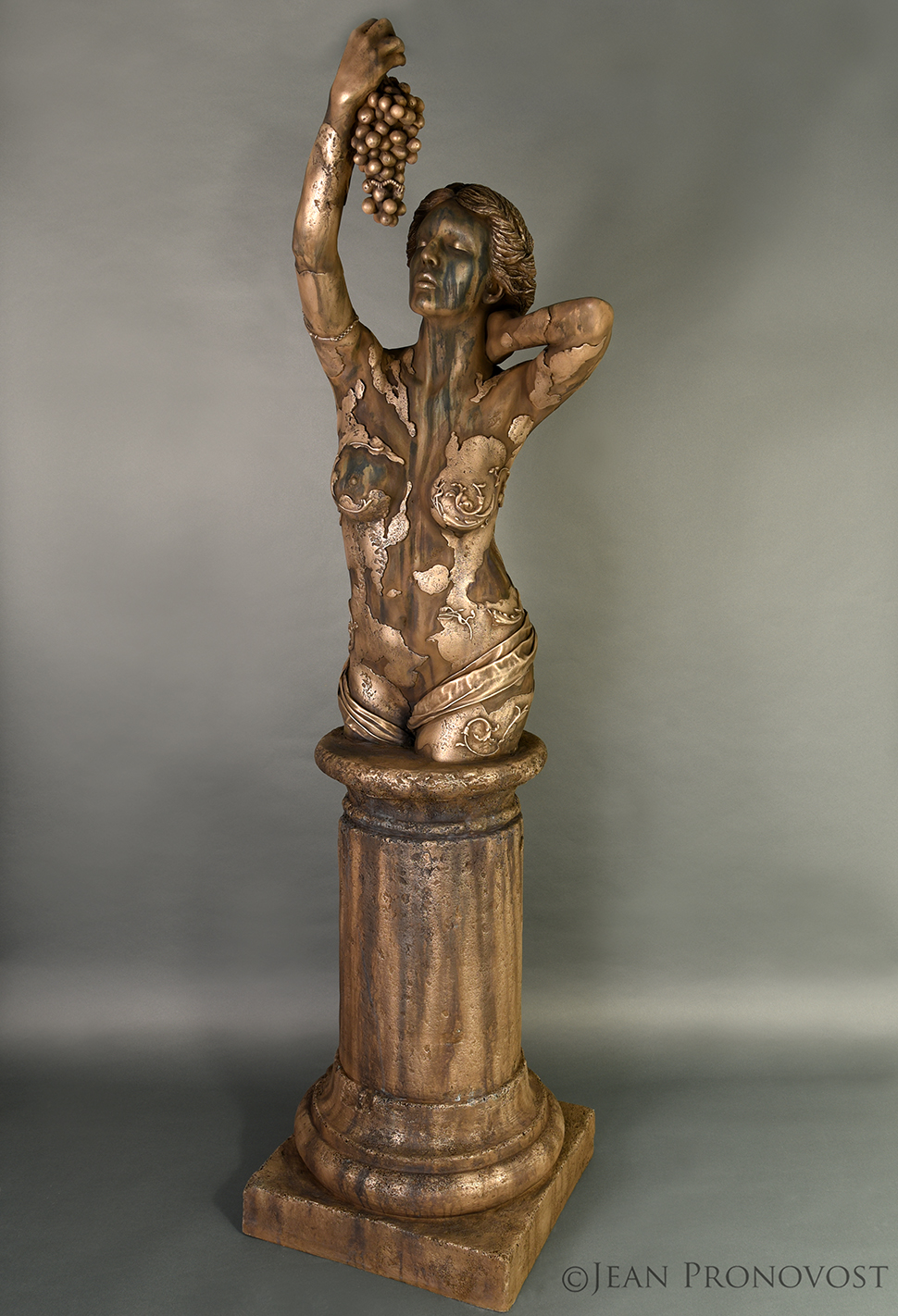
In this photo we see the Maenad sculpture, second in the Bacchante series. the sculpture was made in resin, fiberglass and Bronze. It measures 76 x 19 x 22 inches. It is a personal sculpture of the artist Jean Pronovost, see the extent of his personal work on his artistic web site www.jeanpronovost.com
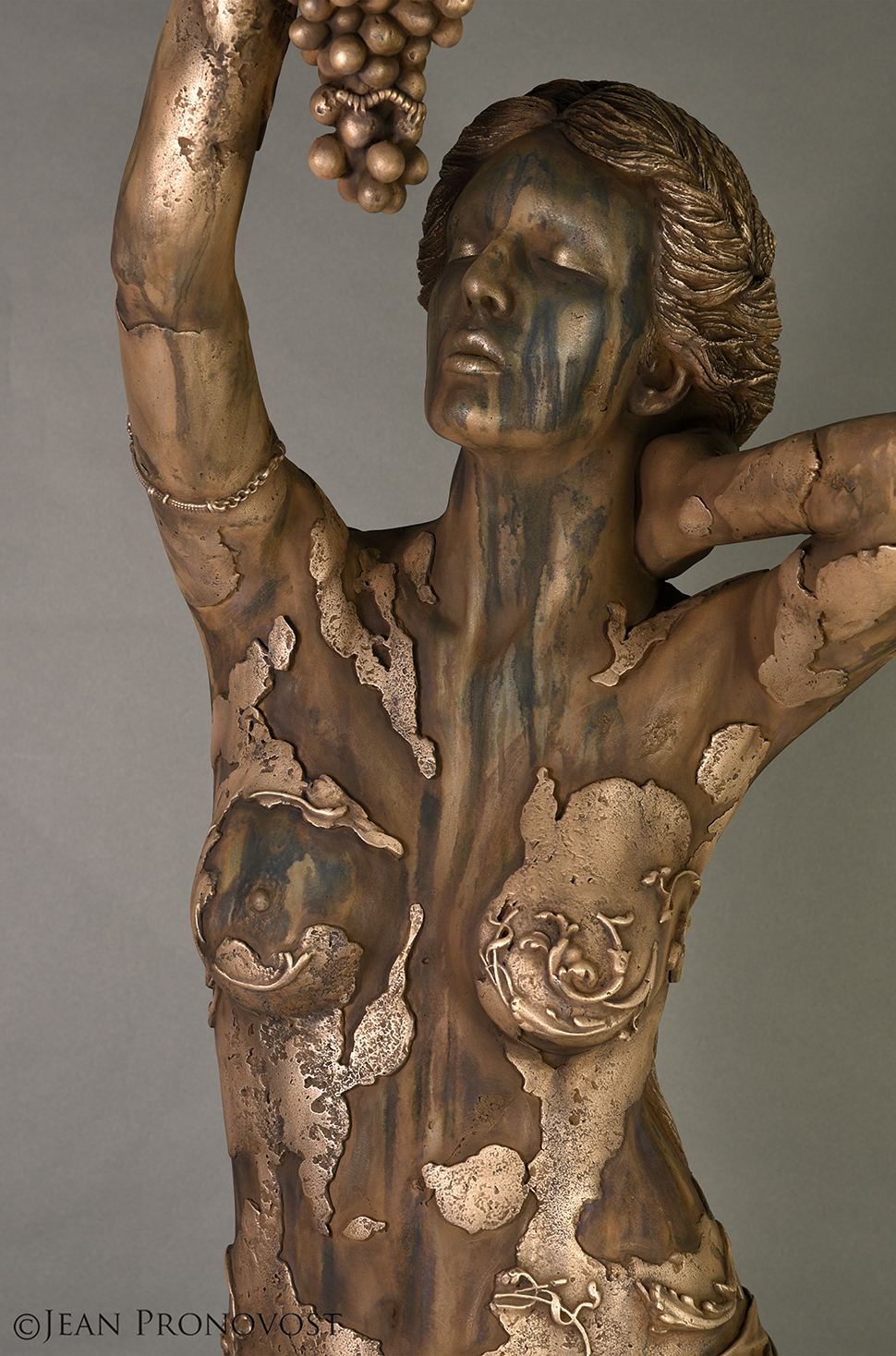
Here we see in detail the sculpture; the corrosion of the body and the rich and complex texture covering it, the polished bronze and also the effects of oxide on the body . We also notice that there is a worm that started eating a grape.
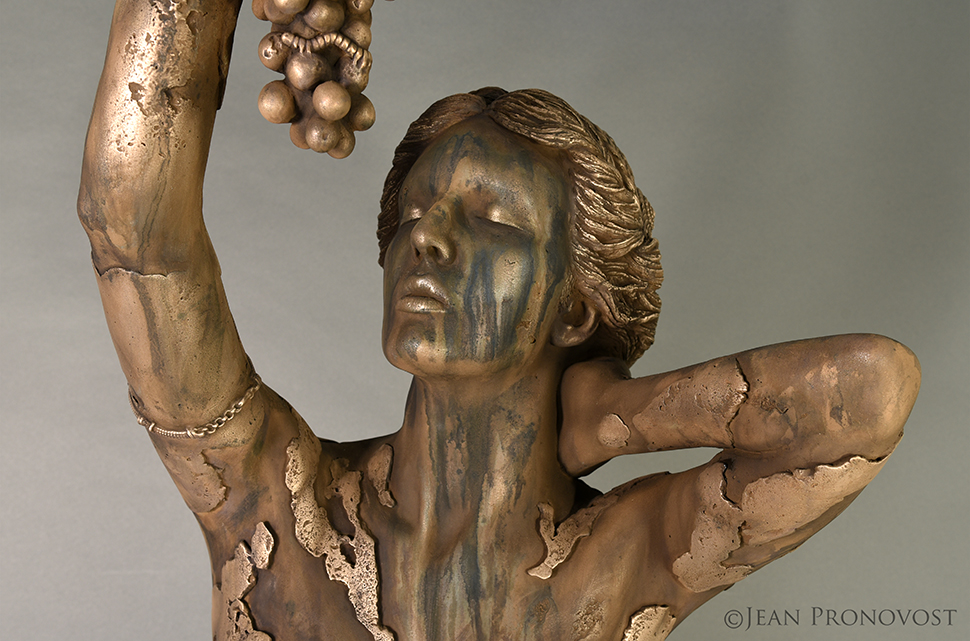
The face of the sculpture in detail.

The profile of the Maenad sculpture ; from the composition of the hair to the corroded textures in relief, from the effects of the patina to the volutes in relief symbolizing the vine, the sculptural work on this particular piece has been refined with passion by the artist Jean Pronovost.
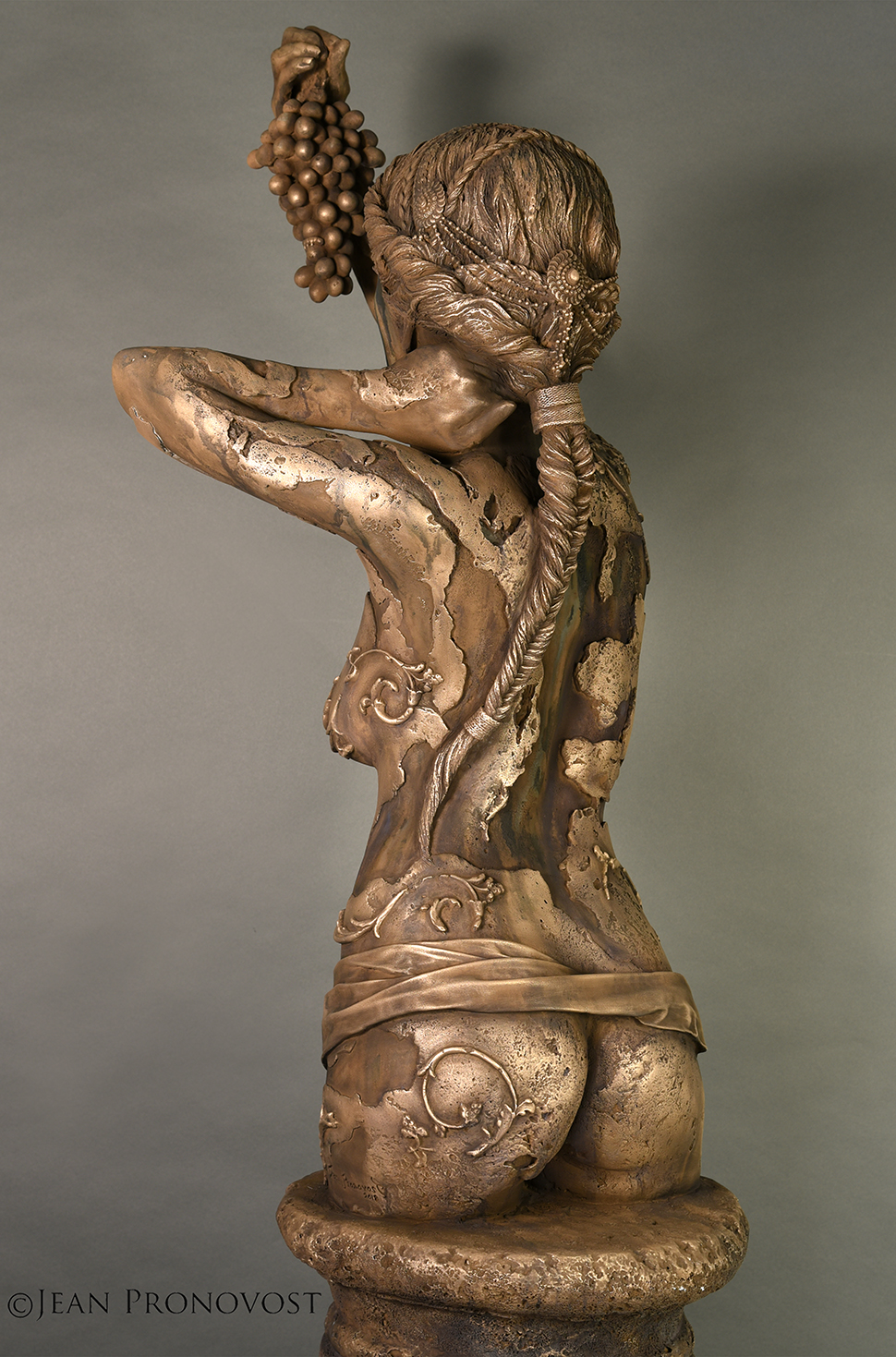
We see now the back of the sculpture, the headdress inspired by the Greek style of the time is dotted with rich ornaments that tries to make us forget as in all times of decadence, the impending perdition. the richness and beauty of polished bronze paradoxically mix with elegance with the black and dark brown oxide of the body of sculpture.
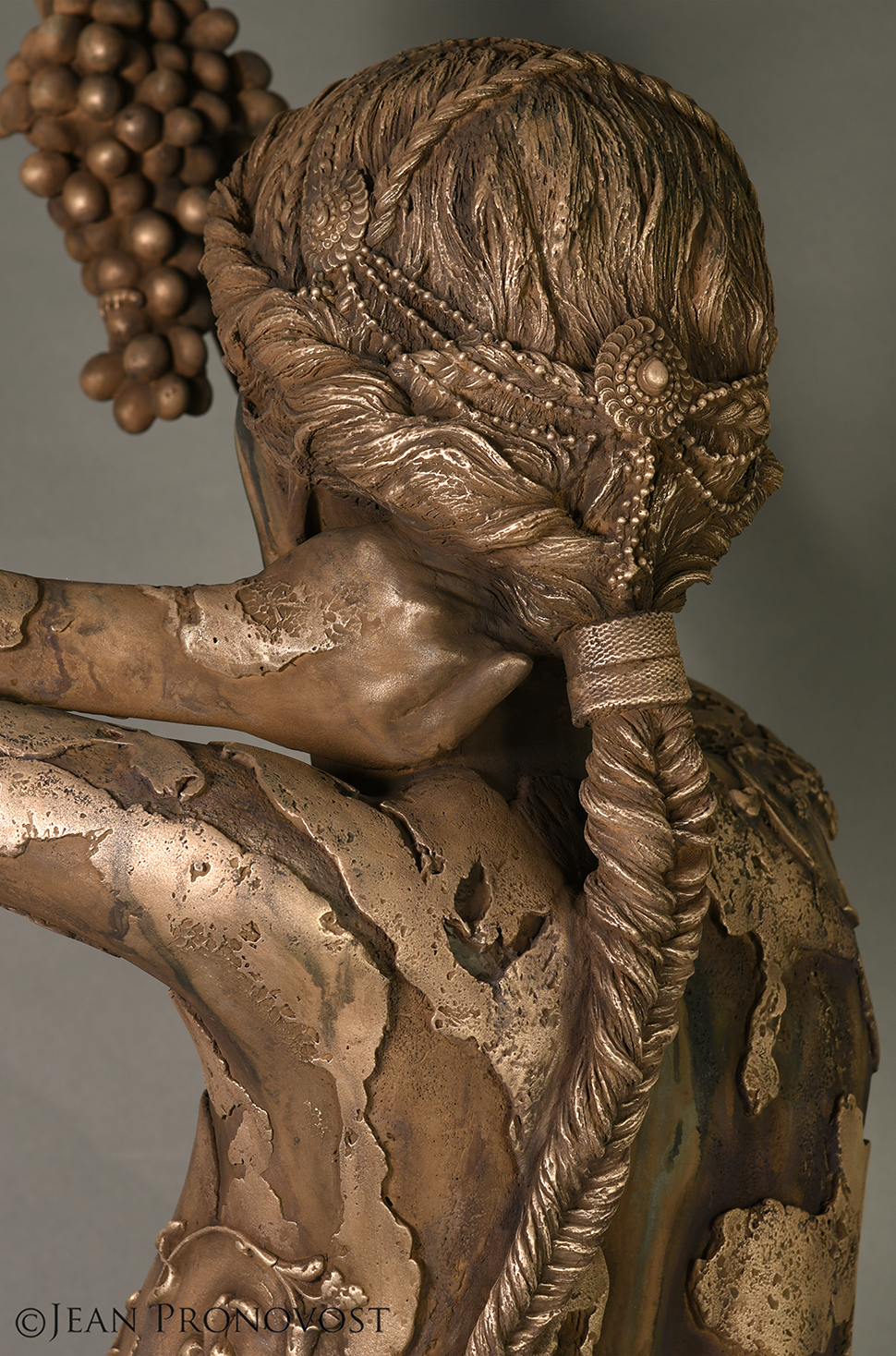
The details of the headdress and textures of the back of the sculpture are here in the spotlight.
